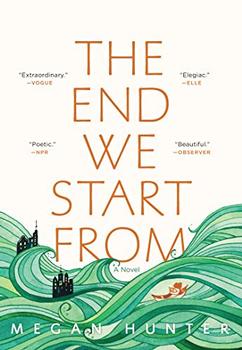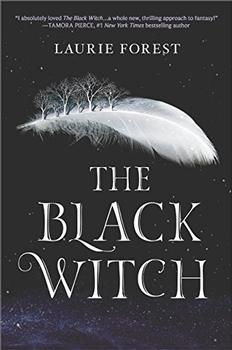Summary | Excerpt | Reading Guide | Reviews | Beyond the book | Read-Alikes | Genres & Themes | Author Bio

Kirsty Logan's The Gracekeepers is an original and lyrical debut novel set in a watery, post-apocalyptic world where the oceans have risen to cover most of the land. Society is divided into the landlockers — those who still live on the few-and-far-between islands, and the damplings — nomads who live on boats in the water. Landlockers and damplings don't like or trust each other much.
The novel follows two separate meandering plot lines and two main characters, both sympathetic young women harboring secrets that connect their fates. Callanish, a landlocker, must hide her webbed hands and feet with gloves and slippers. She is a "Gracekeeper" of the novel's title — her job is to put the dead to rest in the sea. Hers is a solitary and lonely existence where she longs to be forgiven for an untold crime she committed — the reason she's been banished to an isolated life. The second protagonist, North, is a dampling who performs with her bear in a dilapidated floating circus. Unhappily and unwillingly engaged to the ringmaster's vain and arrogant son, North carries her dark secret in her womb. Callanish's and North's stories briefly intersect at several points in the novel, where they feel an attraction to each other but don't understand their connection until close to the end.
The chapters featuring North are full of tension and danger — living and performing with her bear is an ongoing risk, and there is constant strife among the circus crew. Worse, the ringmaster's beautiful but wicked wife hates North and her bear. Callanish's chapters are quieter and more contemplative with her performing the duties as Gracekeeper, preparing a body, dropping it into the sea and placing a cage with a starving bird — a Grace — over the watery grave and then waiting for the bird to die so the grieving family will know when they can stop mourning. While the novel is mostly told in alternating chapters between these two characters, many of the minor characters, circus performers in particular, get their own chapters.
The battalion of circus performers is one of the most entertaining aspects of the story — the artists are colorful, lively and intriguingly complex in their relationships with each other. Here, gender play is given a large role — with brightly dyed hair and flamboyant costumes, women dress as men and men as women.
This fantasy world is carefully delineated with histories, rituals, superstitions, hierarchies and laws for the two divisive societies. While the setting is supposedly post-apocalyptic, it feels more like a Celtic folktale. Since the two female protagonist's destinies are determined more by fate than their own actions, the novel also often feels a bit unmoored.
Deception and deceit are strong themes in this story as are penance and putting the past (and the dead) to rest. The Gracekeeper's job of quantifying the mourning period can also be seen as a metaphor for learning to put a time limit on guilt and blame.
Although the ending is rushed and a bit too convenient to be fully satisfying, I would recommend The Gracekeepers to adult readers and mature teens who enjoy reading fantasies with unusual, richly built settings and unique sympathetic characters.
![]() This review
first ran in the June 3, 2015
issue of BookBrowse Recommends.
This review
first ran in the June 3, 2015
issue of BookBrowse Recommends.

If you liked The Gracekeepers, try these:

by Megan Hunter
Published 2018
A searing original, a modern-day parable of rebirth and renewal, of maternal bonds, and the instinct to survive and thrive in the absence of all that's familiar.

by Laurie Forest
Published 2018
A new Black Witch will rise…her powers vast beyond imagining.
Your guide toexceptional books
BookBrowse seeks out and recommends the best in contemporary fiction and nonfiction—books that not only engage and entertain but also deepen our understanding of ourselves and the world around us.